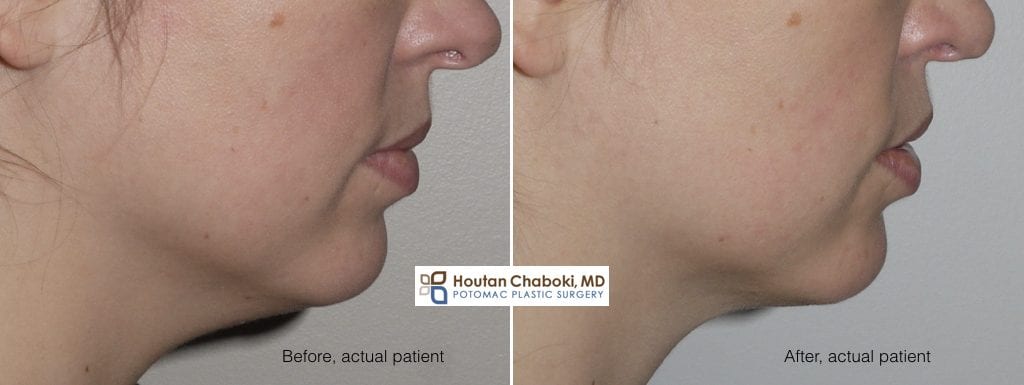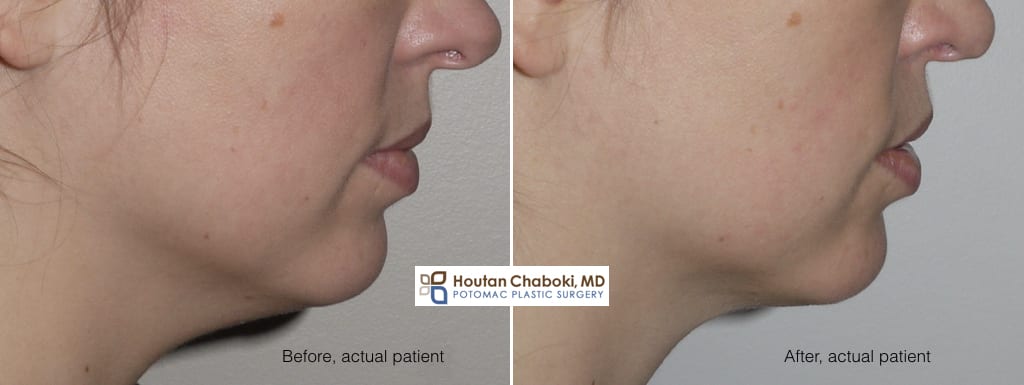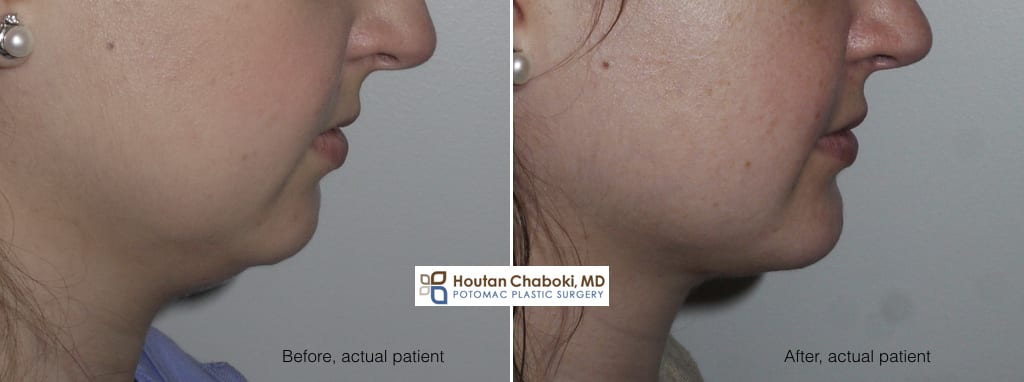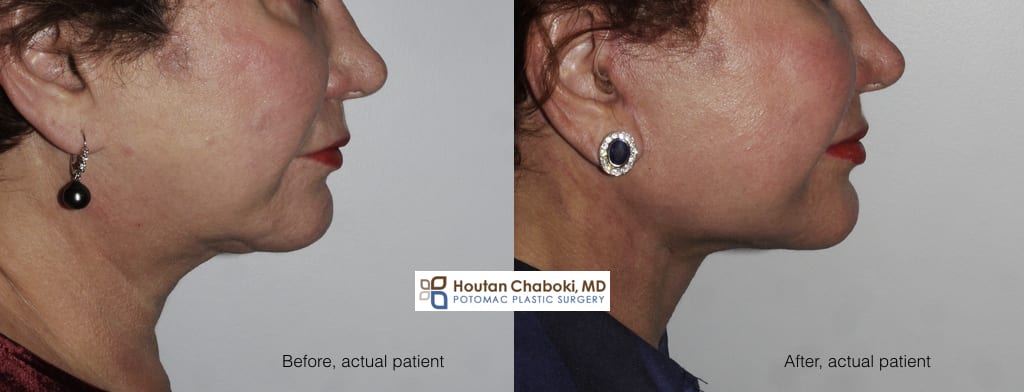A double chin, also known as submental fullness, develops in patients from a combination of factors, including natural aging. Some young and thin patients can have a double chin, starting from a much earlier age. It’s not just from excess weight.
A physical examination can help reveal why a particular patient has a double chin. The neck and chin area are primarily affected by factors which include skin, fat, and bone. The neck glands and muscle may also influence the appearance and contribute to a double chin.
What is neck liposuction?
Liposuction of the jawline, jowls, chin, and neck is very common in plastic surgery practices. Exercise and healthy diet alone often can’t reduce this fat. Other terms that have been used to describe the procedure
- submental liposuction
- chin liposuction
- liposculpture
- tumescent liposuction
Liposuction addresses the extra fat that is present under the chin, but also tightens the skin. Skin tightening doesn’t occur immediately, but rather gradually develops over time. Patient who are younger and have thicker skin tend to tighten more, as compared to older patients or thinner skin. Those patients with very loose skin or skin laxity will require a lower facelift or neck lift, in conjunction with liposuction, to remove skin in order to adequately achieve desired results.
Can liposuction be performed alone?
Yes.
For patients with excess neck fat, minimal skin laxity, and good bone structure, then neck liposuction alone can provide a dramatic improvement. The decision for plastic surgery, however, is very individual. A trusted plastic surgeon will review appropriate options to help you achieve your personal goals.
Can liposuction be combined with other cosmetic surgery?
Yes.
While neck liposuction alone is a great option, many patients choose to combine procedures for an enhanced affect. The more common complimentary procedures include chin augmentation with an implant, a neck lift, and a lower facelift.
What about nonsurgical fat reduction or skin tightening?
Nothing is as affective or has yet replaced plastic surgery, especially when it comes to the neck and chin. Nonsurgical treatments that use radiofrequency, ultrasound, or lasers might be an alternative who aren’t candidates or aren’t ready for traditional liposuction surgery. The results with nonsurgical treatments tend to be more subtle and gradually develop after multiple treatments.
In addition, several plastic surgery research studies on liposuction (abdomen, arm, etc) have shown that good contour and skin contraction are achieved with traditional liposuction alone and that energy devices didn’t provide a demonstrable advantage or improvement.
Read more about energy based devices for the face and neck, thread lifts, or injections to dissolve fat on our blog.
Another benefit of liposuction is that is works in all skin types. Patients with reactive skin, sun sensitive skin, or darker complexions may not be candidates for energy based skin tightening treatments or some nonsurgical facelift treatments.
How is recovery after neck liposuction?
The procedure takes less than an hour when performed in isolation. The area is numbed with a tumescent anesthetic solution that helps reduce pain, swelling, and bruising. Very small incisions are placed under the chin and behind each earlobe which allow the plastic surgeon to reduce fat and tighten the skin of the chin, jawline, and neck.
Patients have typically reported mild tightness or discomfort after neck liposuction. An elastic neck and face support strap is worn during the initial recovery period to help enhance results and reduce swelling. Patients have returned to work very soon after the procedure, as the recovery usually has minimal bruising or swelling.
What is the best method to reduce a double chin?
An evaluation by a cosmetic surgeon who specializes in a variety of face and neck procedures can help you determine what is the “best” procedure for you. Your specific anatomy, along with recovery time, budget, and medical history are some of the factors that can affect the decision between you and your plastic surgeon.





Leave a Reply